Today’s article is a review of “Phonics Pathways / Clear Steps to Easy Reading and Easy Spelling.”
This learn-to-read curriculum is not as widely-known as “Teach Your Child to Read in 100 Easy Lessons” or “Alpha Phonics”, and while -on the surface- it may actually look very similar to them, that couldn’t be further from the truth!
The system, the approach to teaching reading this curriculum uses is very different!
So, let’s find out what the approach is all about and who this curriculum is good for!
*Affiliate Disclosure: Some links lead to Amazon marketplace. As an Amazon associate, I earn from qualifying purchases, at no additional cost to you). This helps keep the information on the blog free and available to everyone.
The Successive Blending Curriculum
I must admit that this program has been a recent discovery for me. I found it while researching and looking for curriculums that integrated -or were built around- a concept I have been fascinated by lately; that is, successive blending.
This is a type of blending strategy that, in fairness, all children may not need (it could mean going more slowly than some children actually need), but for those that struggle with blending, it can be a real life-saver and a total game-changer.
If your child struggles with blending, the problem might not be that he or she doesn’t understand how blending actually works. The cause is likely to be his/her short-term memory. This is very common for many children.
These kids are putting so much mental effort into sounding out the letters that by the time they get to the last letter of a word, they have forgotten all about the first one.
If this sounds familiar… Pay close attention!
When we are working with successive blending, even if we are reading a three-letter word, a CVC word such us “mat,” we read a maximum of two letters at a time.
Not clear enough? Below you’ll find the step-by-step process of how to go about it.
- We cover the last two letters and we get our child to say the first one.

2. The uncover letter #2, say its sound, and immediately blend it to the previous sound (ma).
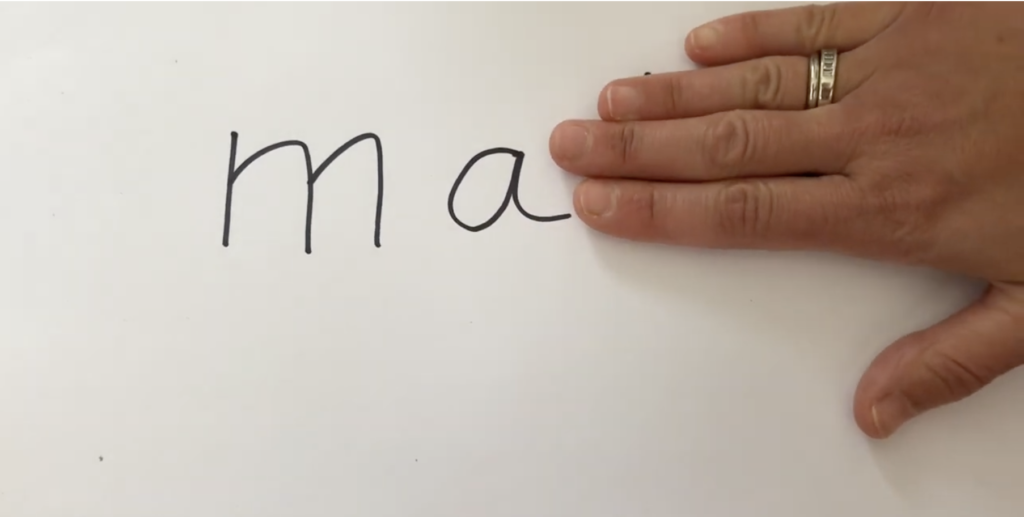
3. We then uncover the third letter and ask our child to say the last sound “t” and immediately blend that last sound with the first two blending sounds. Ma-t mat
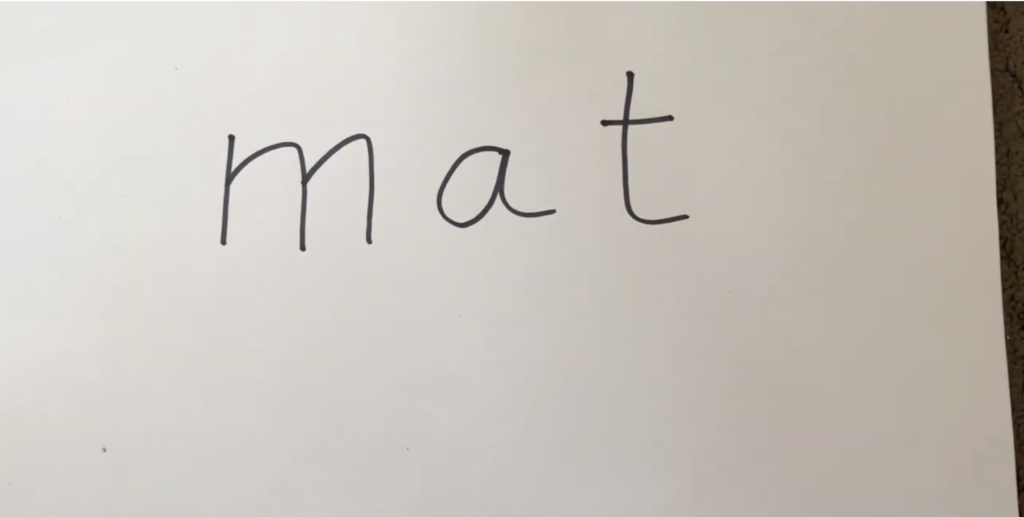
So, if your child is struggling to master blending, and you’ve tried other things before, such us continuous blending -which is another blending strategy that I love and is more than enough for many children!- and they haven’t worked for you, look into successive blending.
So, now that you know this, let’s see how this curriculum is built around successive blending!
IN A RUSH – PHONICS PATHWAYS IN A NUTSHELL!
- Who is it for: Struggling readers, students that find blending particularly difficult, or students with learning disabilities, such us dyslexia. Also, a good fit for older students.
- System: A very unique system that combines systematic synthetic phonics with the successive blending approach.
- Number of levels: All in one book. Everything is included in this one manual. Suitable for students from K – 4th graders.
- Great if you are after… Simple, effective and inexpensive option, and don’t care so much about an all-frills curriculum. The best option we know of if you want to try successive blending.
- Price: $20 (approximately – check final price on Amazon)
- How to Buy: Get it on Amazon here!
How does Phonics Pathways integrate the successive blending strategy? A close look into this literacy curriculum
So, first of all, you teach the short vowel sounds (a, e, i, o, u).
You a have script on how to go about teaching short vowel sounds and a lesson plan, which, by the way, also includes some games and fun activities.
And I say this because when you quickly skim through this program, it doesn’t look like there will be games or fun activities, but there are!


After teaching short vowel sounds, you move on to teaching consonant sounds and start to blend these consonant sounds with the short vowel sounds.
And this where successive blending starts.
You blend all the consonants you learn at this stage with every single vowel very gradually. See example below:
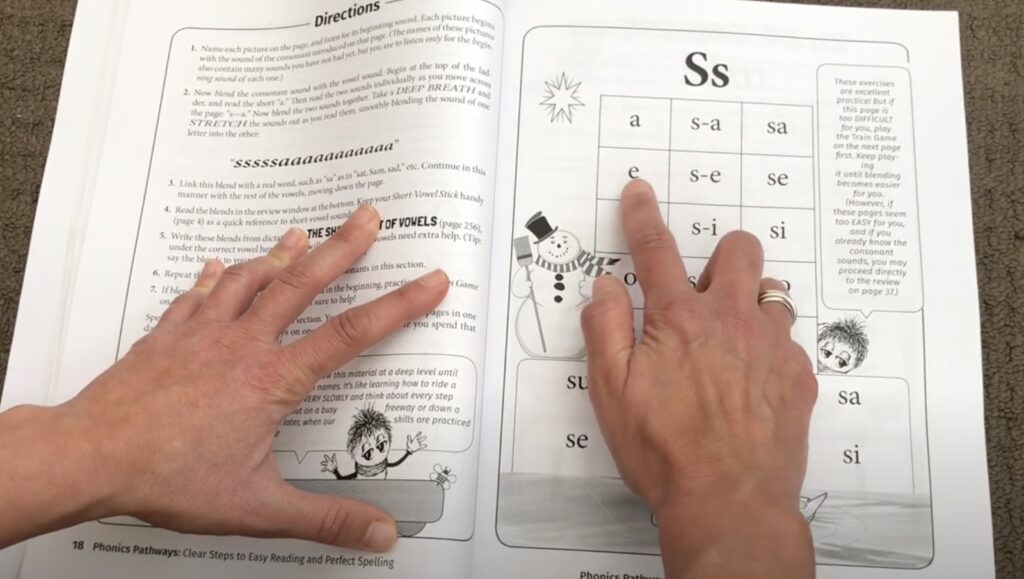
Note: Always make sure your child or student understands that this is an initial blend of a real word. So, as per instructions on the curriculum, remember to put examples of real words, so he/she understands. For instance, “sa”, as in “Sam”; “se”, as in “set”; “si” as in “sit”; “so”, as in “sob”; “su” as in “sum”.
Why is this important?
- These are not real words, which can be confusing for some children… What is this that we are reading here?
- If we do not let them know this from the very beginning, they are going probably be very confused later on when we teach the concept of open syllables, and how for instance words like “me”, “he” or”so”, are read differently, with a long vowel sound. This is going to contradict what they learned before unless we let them know these are word fragments.
Three-letter words, CVC (Consonant + Vowel + Consonant) words are next.
How are kids going to read these CVC words?
Again, very gradually. Applying successive blending principles.

Next, we learn how to read the words “I” and “a”.
I really like the explanation it gives about how we read these words: “The TWO SHORTEST WORDS in English language are ‘I’ and ‘a’. You simply name the letter, and THAT is the WORD! Let’s try reading ‘I’ and ‘a’ together with a few of the three-letter words you are now able to read. Read down each group. By the way, ‘a’ is what we use if the following word begins with a consonant, as in ‘a bug.’ But, ‘an’ is what we use if the next word begins with a vowel, as in ‘an ant’, ‘an elf’, ‘an igloo’, ‘an octopus’ or ‘an umbrella.’ ‘A’ and ‘an’ mean the same thing!”

Then, we have this pyramid exercise (see picture below).
You start reading short sentences and incrementally end up reading a really long one. You’ll find a few more of these pyramids in this curriculum.
By the way, at the beginning you are not expected to read the long sentence at the base of the pyramid. This takes time, so don’t worry! The idea is to start with one word (top), and slowly build into phrases and sentences of increasing complexity until you get to the base of the pyramid. This helps with reading fluency and grows your child’s confidence with each line read correctly.
Not to mention that each sentence becomes more interesting and far-reaching!

Then you move on to learning about the /k/ sound, which can be represented by the letters “c” or “k” depending on what vowel follows.
Next, we learn about the “ck” digraph, which represents the /k/ sound as well.
As you can see in the picture below, we continue to blend sounds gradually, in a successive way.
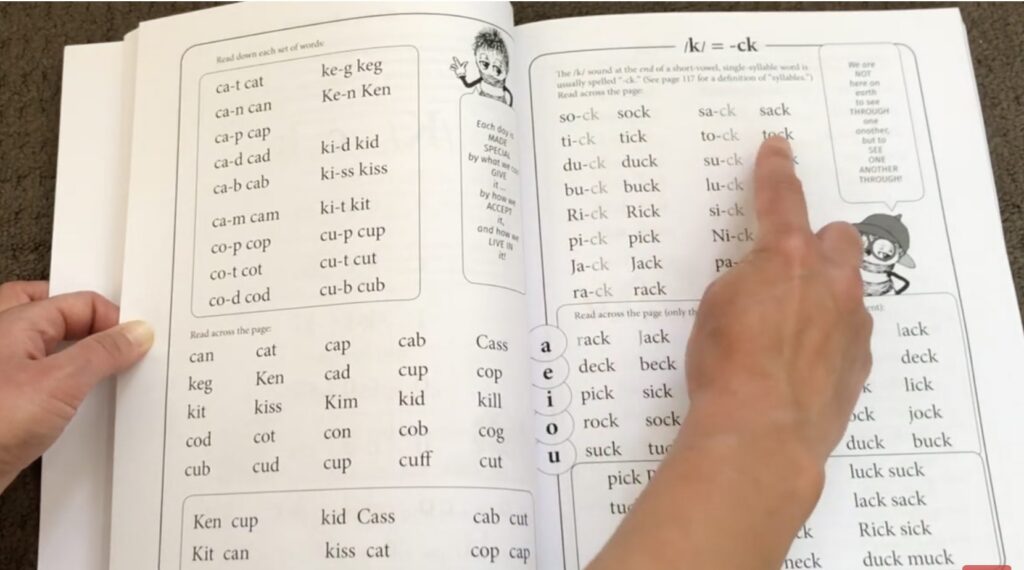
Blending CVCC words is next. Same approach: successive blending.
On page #58, it says: “After the next two pages, these words will not be broken down as above. If some of them should be difficult to read, it can be very helpful to cover up the last letter with a piece of paper, read the three-letter blend, uncover the letter, and then read the whole word.”
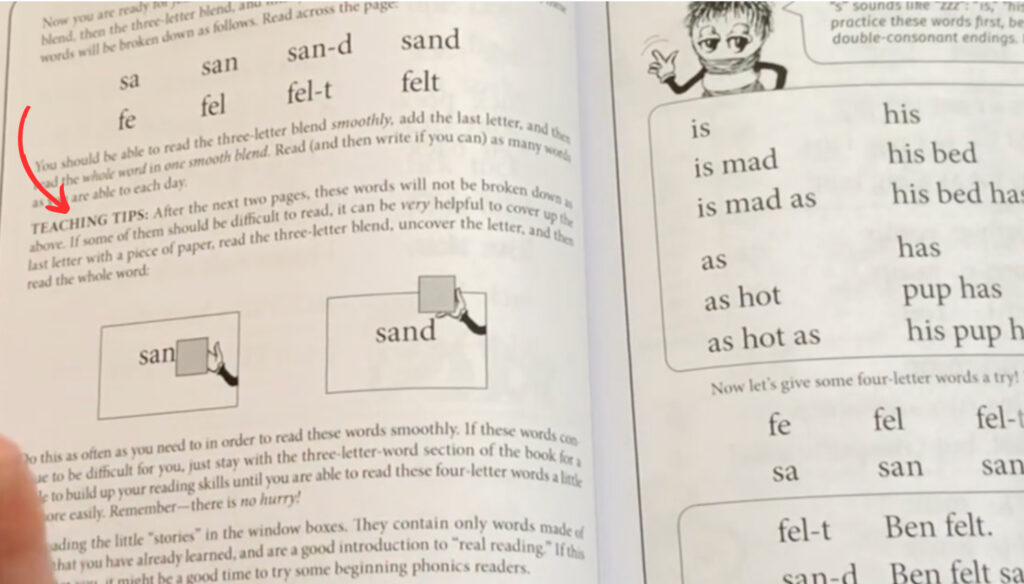
So, you judge whether you need to do this or not. It totally depends on the student.
Anyway, I think that at this point this curriculum assumes that your child already has understood how blending works, and has mastered it.
So, after a lot of practice with these two-consonant ending words, it’s time to move to more complicated concepts, including:
- Words ending the suffix y
- Digraphs
- -ing suffixes
- -nk endings (which I personally wouldn’t teach as a separate thing, but I know some people do, as the /n/ sound can distort the sound of the previous vowel)
- long vowels sounds, etc.
I am not going to continue to explain all of the phonics concepts covered in this program, because, in my opinion, what’s really interesting about Phonics Pathways is what we’ve seen so far: the “successive blending” approach, also referred to as “cumulative blending.”
Up to what level does Phonics Pathways take your student?
Let’s see, however, up to what level it takes you:
- Prefixes
- Suffixes
- Compound words
- Building blocks
But, what are building blocks you might be wondering. See picture below.
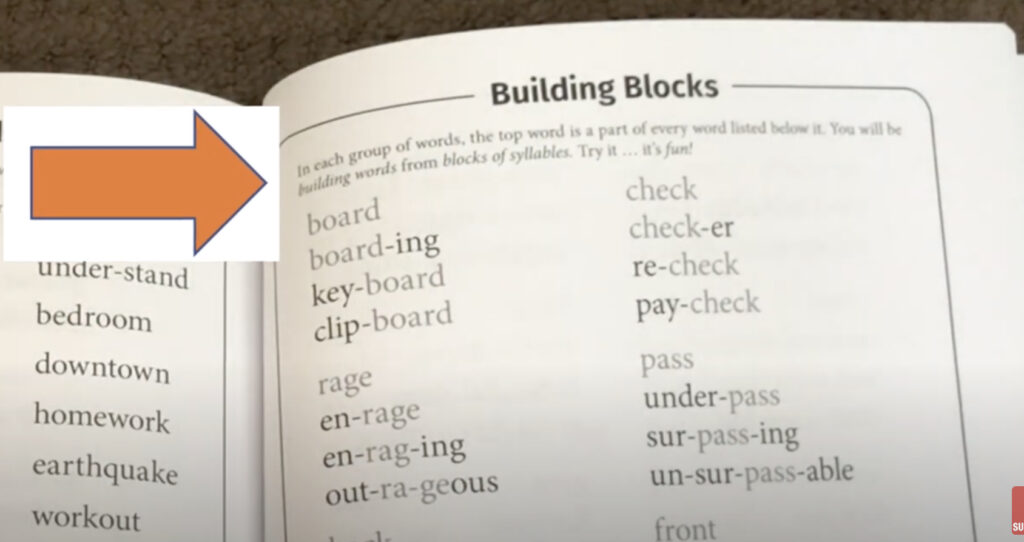
Certainly a very interesting way to tackle more complex words, containing prefixes, suffixes, etc.
Phonics Pathways could be a curriculum to use even after 2nd grade, because these concepts are normally taught in 3rd and 4th grade.
Phonics Pathways Pros & Other Considerations
- There aren’t too many curriculums that have this successive blending approach so deeply ingrained in them.
- The curriculum includes games and fun activities, as mentioned before. Even if, on the surface, this program doesn’t look like it will include any of this!
- The pyramid exercises are very good for building up your child’s word fluency. Remember that, if interested, the author also has a separate practice book based on this unique pyramid format.
- There are a lot fluency check activities /reviews along the way. Even using non-sense words! These fluency checks and reviews are there so your student reinforces what he/she’s learned so far and also, for you, as a teacher to spot mistakes. This way, you can easily see where your students’ weaknesses and problems are and what concepts need further review!
- On the cover of the book, it says: “All ages”, and I agree. This curriculum is suitable for older children and even for adults. You may have to ignore the games and children-oriented activities, but other than that, I can really see how this curriculum can be a good option for adult learners.
- Dictation is a big part of this program as well.
- There is an appendix dedicated to spelling after you’ve finished your focus on teaching reading. So, this is a reading+spelling curriculum. And it goes well beyond 2nd grade, so extremely cost-effective. It costed me in the region of $20 dollars on Amazon. You may even be able to get second hand for a cheaper price. Check final price on Amazon here.
Phonics Pathways Cons
- I know that some people with struggling readers want reading curriculums that are really kinetic, that engage all the senses for a more holistic learning experience.
If that is what you are after, then Phonics Pathways is probably not the right fit for you. In that case, I’d look into curriculums that follow the Orton-Guillingam approach to teaching reading, like curriculums number #2 and #3 in our ranking of the best learn-to-read phonics programs. - You have to go back and forth a lot. You know: “Refer to this, refer to that, review here, review there.” It’s not as clear and straight forward as “Teach Your child to read in 100 Easy Lessons,” for example. You’ll get the hang of it, but you can’t just the open the book and go and do the lesson. Especially, at the beginning, you are going to need some preparation. There are even things for the games and activities suggested that you are going need to photocopy, laminate, etc.
Conclusion
In conclusion, “Phonics Pathways / Clear Steps to Easy Reading and Easy Spelling” is a great learn-to-read curriculum that uses the successive blending approach to help children who struggle with blending.
This program is suitable for parents who want to teach their children to read and spell in a structured and gradual manner. The successive blending approach is particularly helpful for children who struggle with blending, and it has been proven to be a real life-saver for them.
Phonics Pathways will give your child a solid foundation in reading and spelling.
If you are still not convinced that this is the right program for your child, here is some recommended further reading:
Ranking of the best learn-to-read synthetic phonics curriculums
Children Learning Reading program review
Teach Your Child to Read in 100 Easy Lessons vs. Alpha Phonics. The Great Debate!

Hey there! I’m Laura – an author, YouTuber, blogger, and the creator of the “Learning Reading Hub” platform. I created this space to dive into the world of reading instruction and to shout from the rooftops about how vital it is to use the right methods for teaching reading. I’ve got a TEYL certification (Teaching English to Young Learners), plus a Journalism degree from the University of Navarra in Spain, along with a Master’s Degree in Communication.
I’ve always loved digging into research, jotting down my thoughts, connecting with people, and sharing what makes me tick. With a background in marketing, digital projects, and the education scene (especially language learning), I’m all about wearing different hats.
When my first kid needed to learn how to read, it opened my eyes to the challenges and complexities involved. This journey took me through a rollercoaster of self-teaching, eye-opening discoveries, and yeah, some letdowns too. There’s so much conflicting info out there, along with methods that just don’t cut it. And let’s face it, these issues are way too common.
Now, I’m all about channeling that passion (without sounding like a know-it-all!) and sharing my journey. My mission? Making it easier for those who are on the same path I once was.
My heart’s with my family and the amazing Learning Reading Hub project. I live with my husband and two little ones, raising them in a bi-lingual environment (English and Spanish).



